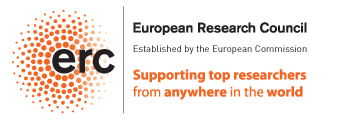Reading group
Webpage of GAPCOMB's reading group
GAPCOMB organizes a weekly reading group joint with the research team of Prof. Albert Atserias from the computer science department in order to cover some hot topics in the interaction of theoretical computer science and combinatorics.
Autumn 2025-26: Hot topics in Combinatorics
Autumn 2024-25: BGSMath Advanced course on Threshold Phenomena for Random Structures
Spring 2023-24: Reading Seminar on Polynomial Freiman Ruzsa (PFR)
Autumn 2022-23: Reading Seminar on Thresholds
Spring 2020-21: Masters seminar on quantum and classical error-correcting codes
Autumn 2020-21: Recent trends in Discrete Mathematics
Spring 2019-20: General topics
Autumn 2019-20: Random walks on infinite groups
Spring 2018-19: General topics
Autumn 2018-19: Non-standard methods in combinatorics
Spring 2017-18: Graph limits
Winter 2017-18: General topics
Spring 2016-17: General topics
Winter 2016-17: Graph expanders
This activity has been sponsored by ERC-2014- CoG AUTAR (grant agreement ERC-2014-CoG 648276 AUTAR)

Share: